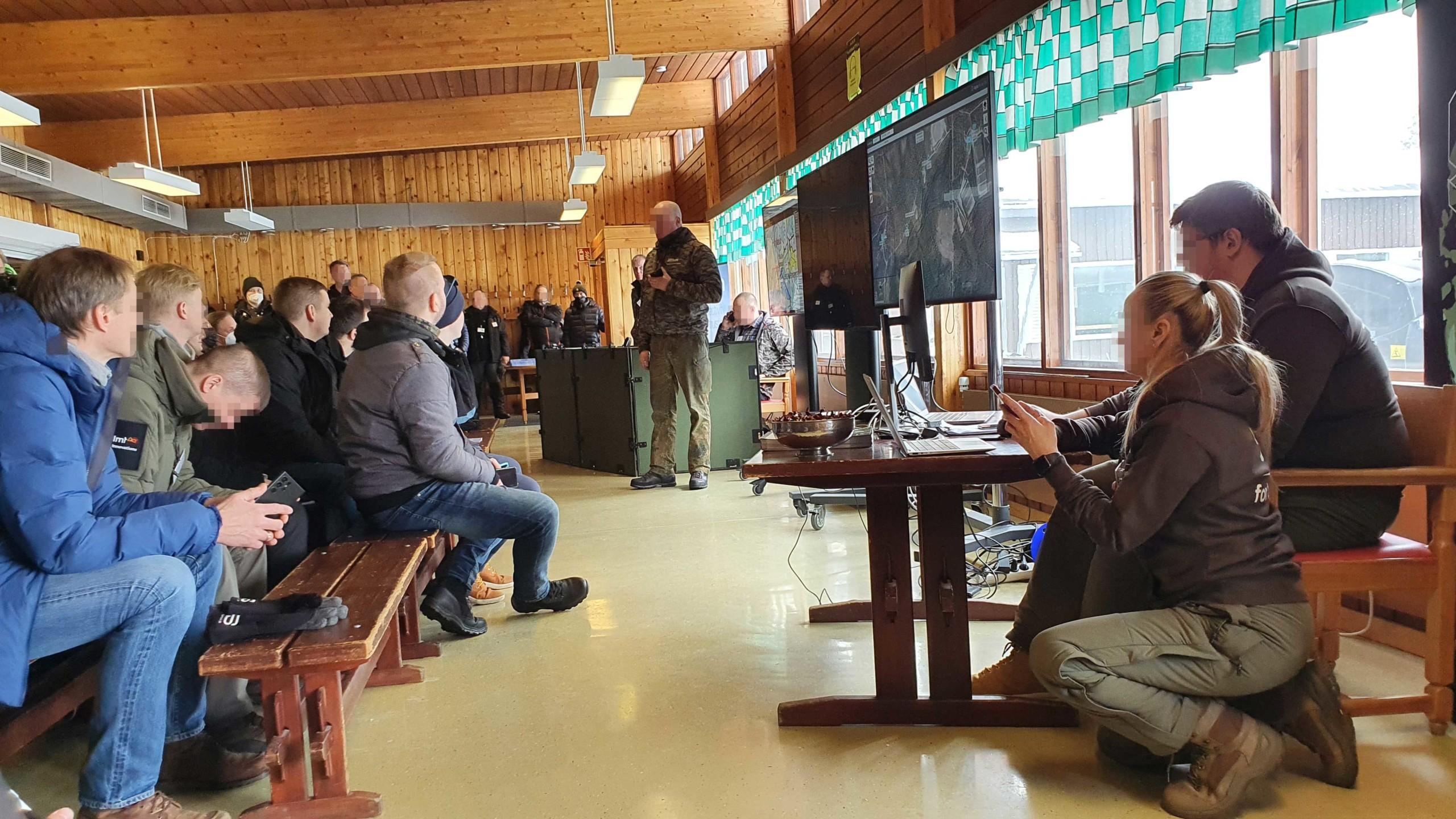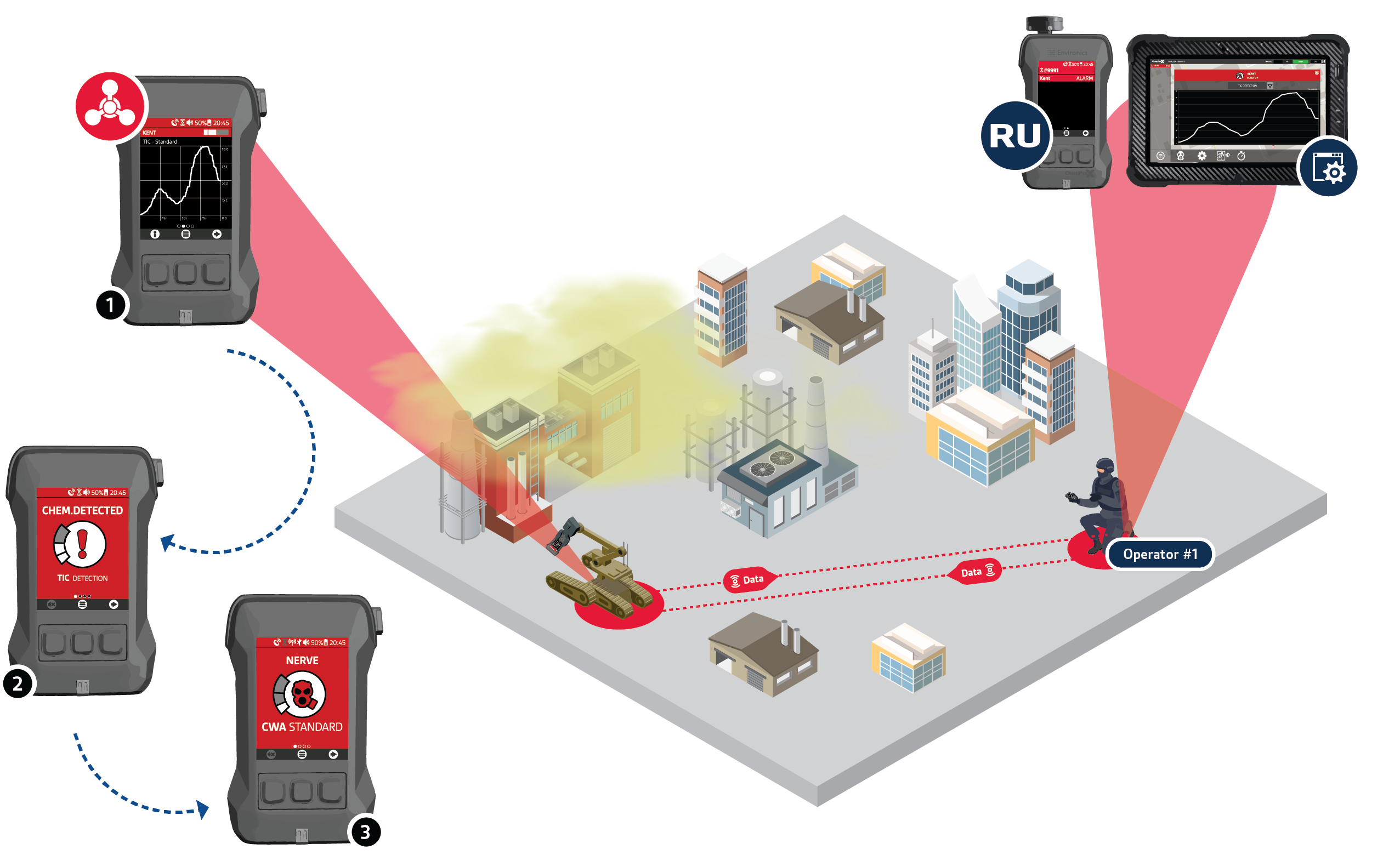Environics staff members Product Manager of Handheld Chemical Detectors Mika Saarinen and Area Manager Ahti Luukkonen attended a Finnish Defense Forces exercise in Kajaani on March 30th, to introduce ChemProX’s features, namely those those related to Unmanned Chemical Reconnaissance application. This exercise was part of the EU research project Integrated Modular Ground Systems (iMUGS), which aims to develop a modular and scalable architecture for hybrid manned-unmanned systems in order to address a large range of missions.
The exercise was commanded by Kainuu brigade (in Finnish “Kainuun prikaati”) a Finnish Army unit that specializes and trains troops suited for combat on the heavy snow and poor road-infrastructure areas of Northern Finland.
Finnish harsh and demanding conditions call for a high level of data transfer technology

iMUGS project introduction at Kainuu Brigade’s facilities in Hoikankangas, Kajaani.
ChemProX Deployment Kit Enables Dynamic Communication
ChemProX was one of the devices on the scene to showcase the latest developments of Finnish-made cutting edge technology for improving the interaction between man and machine. ChemProX – formerly designed and developed to be utlized as a handheld detector – can be easily and quickly mounted onto Unmanned Air Vehicles (UAVs) and Unmanned Ground Vehicles (UGVs) with its Deployment Kit.
ChemProX does not require any external hardware or sofware, having built-in all that is needed for adding chemical detection capabilities to remotely controlled applications within minutes, allowing a 2-way dynamic communication between the operator the “the machine”.

ChemProX Deployment Kit enables dynamic communication for remote detector control.
1. Use the trend line to locate the danger. // 2. If a geneneric alarm appears… // 3. … use the dynamic communication capability to change the detection mode — in this case, from TIC to CWA — and drill the situation further, to classify the detected chemical.
